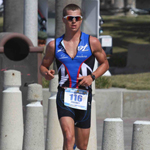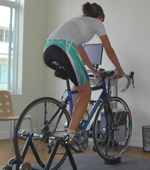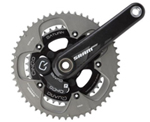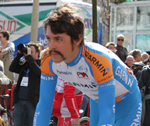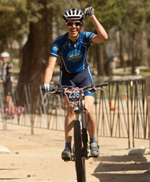
Optimize Your Training When Not Training
Effective training has many components: proper intensity, sufficient volume, intelligent nutrition and a balanced psychological approach. While each of these components plays a key role, the most important part of effective training actually happens when not physically training - during recovery.
Welcome New Whole Athlete Coaches!
We are very pleased to welcome three new coaches to our team of experts: Jeffrey Peterson, Tom Rosencrantz and Nitish Nag. Jeff is a professional triathlete who comes from a strong running background. Tom is a talented all-around athlete, who has found a calling in Xterra multisport in addition to his bike racing endeavors. Nitish is an exercise science research student and a pro MTB racer who competes on the road as well. All three bring practical athletic experience and balanced coaching philosophy to the Whole Athlete coaching staff.
Biomechanics: Start at the Foot to Reach the Peak Fit
When most people talk about bike fit the first thing that comes to mind is the saddle, and more specifically saddle height. It makes sense, since proper knee extension is fundamental to producing power and doing so efficiently. It's what we feel most directly when pedaling. The contact at the hands is also very apparent - how far out there you have to reach and the weight into the hands, making the handlebars a keen observation point as well. But unless we experience pain or discomfort in the feet, they seem to take a backseat to the arms and legs. No less important than the contact to saddle and bars are the pedals. Everything starts with the feet... More>
Product Spotlight: Quarq Cinqo Power Meter
SRM and PowerTap finally have viable, reliable competition - the Quarg CinQo. Like all true power meters, the Quarq is strain gauge-based, with sensors built into the crank spider. While Shimano and Campagnolo brand-specific spiders are not available, there are a host of other alternatives available, including FSA, SRAM, Specialized, and Cannondale in both standard (130BCD) ring size and compact (110BCD).
The Tao of Steve: Doing Whatever it Takes
Whole athlete Steven Cozza has had a whirlwind spring. From a nearly-devistating collarbone break at the Tour of Qatar, to the cold, hard cobbled classics of Belgium and France, to sunshine on the eve of the Tour of California. Podium Cafe caught up with Steven to get his insight into racing at the Pro Tour level.
Whole Athlete Development Team
This spring, our junior development team has been absolutely dominating in the dirt and ripping it up on the road. How about two wins at Bonelli Park US Cup and five wins at the Fontana ProXCT/ US Cup? Or wins in the San Dimas Stage Race and Wente Vineyards Classic Road Race? Entirely funded by donation through the Velo Development Foundation, a 501(c)(3) non-profit organization, the team is reloading for the second half of the year, with a team altitude training camp in Lake Tahoe before traveling to Colorado for the US Mountain Bike National Championships. And they need your support! For more information on how you can help the future of cycling, please visit http://www.wholeathlete.com/team.htm and http://www.velodevelopment.org/.
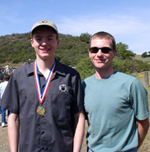
Mental
Fitness: Get the Most from a Coach
By Marvin Zauderer
Perhaps you already have a coach. Or, you may have one someday. How you manage your side of the relationship can have a huge impact on the progress, fun and results you have on the bike. The mentally fit cyclist knows which strategies to use to make the most of the coach-athlete relationship.
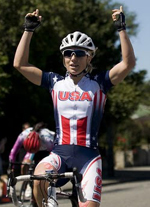
Coach Shelley Evans on Track for the Road
Whole Athlete coach Shelley Evans (Peanut Butter & Co. TWENTY12) is the current, two-time Track National Champion in the scratch race with World Cup podium results. Her big target has been the 2012 track Olympics until just recently her event was eliminated from the games. Not to be deterred, Shelley has simply shifted her focus to the Olympic road race. You may think a track sprinter might not be that well-suited to the road, but Shelley has found success there as well. Cyclingnews.com recently caught up with Shelley for a candid interview at the Tour of the Gila Stage Race - where she won the Stage 3 criterium and helped her teammate Mara Abbott take the overall victory.

Echelon Napa Grand Fondo - May 23, 2010
The Echelon Napa Gran Fondo is a European-style cycling event held in the beautiful Napa Valley. Come join us! Gran Fondos attract a broad array of cyclists including casual riders, weekend warriors, amateur racers and a few professional cyclists. There are levels of challenge for everyone, including a 30, 60, or 100 mile road cycling option. The event is a cancer treatment and research fundraiser.
Holistic Performance Newsletter - Vol. 18, Spring 2010
By Dario Fredrick
Effective training has many components: proper intensity, sufficient volume, intelligent nutrition and a balanced psychological approach. While each of these components plays a key role, the most important part of effective training actually happens when not physically training - during recovery.
Most competitive athletes have little difficulty pushing themselves, devoting plenty of energy to physical output. While it is essential to apply workloads that stress the body beyond its current state in order to improve, benefits are realized only when recovery from training occurs. The body must rebuild itself to adapt to a higher level of power or endurance. Without proper recovery, the subtly damaging effects of training accumulate and can lead to burnout, overtraining or injury. Recovery is as important a part of training as the physical training itself.
The rate of recovery is important for competitive athletes, particularly as they commonly train and race on consecutive days. A proactive approach can speed the rate of recovery, improving performance potential for subsequent workouts or on back to back race days. We can separate proactive recovery into three main categories: refueling, rebuilding and restoring.
Refueling for Recovery
The primary fuel during exercise is carbohydrate stored as glycogen. Muscle glycogen is a "fast" fuel located around muscle and in the liver, and its depletion leads to fatigue, reducing peak sustainable power. Logically, replenishing muscle glycogen stores after a race or training session is a priority to optimize recovery. Also, sufficient carbohydrate intake before and during endurance exercise can help reduce stress on the immune system inherent in prolonged and intense training.
The timing of replenishing glycogen affects how quickly you recover. A window of opportunity exists within the first 30-60 minutes immediately following exercise in which ingested carbohydrates are more quickly stored as glycogen. This accelerated rate gradually slows over the next few hours to a normal, resting level. After a glycogen depleting exercise session, such as a long training ride or race, the highest post-exercise glycogen resynthesis occurs when ingesting at least one gram of carbohydrate per kilogram of body weight in that first hour. For a 150 lb athlete, this translates to approximately 68 grams of carbohydrates (divide weight in pounds by 2.2). High glycemic carbohydrates (simple sugar) appear to be most effective during the post-exercise window. Some research has suggested that including a small amount of protein improves the rate of glycogen storage as well. Given that protein is an essential component for rebuilding tissue and that it does not limit glycogen storage, it makes sense to take in both. If real foods are not available, there are numerous sports recovery foods and drink mixes that use a carbohydrate/protein ratio of 3:1 or 4:1, simplifying the process for you.
Hydration
Re-hydration is arguably the most important element of refueling for recovery. Exercise can cause a large loss in fluid, and in hotter conditions, endurance athletes can lose as much as three liters of sweat per hour. A fluid deficit of as little as 2% of body weight can impair performance, emphasizing the importance of hydration as part of optimal recovery. Try to take in at least 16-20 ounces of fluid for every pound of body weight lost during a training session or race. It is also important to recognize that the thirst mechanism is delayed compared to your body's hydration needs. Drink before you're thirsty, and consume the appropriate amount of fluid during recovery regardless of thirst. Minerals such as sodium, potassium, chloride, calcium and magnesium are also lost through sweat and a mineral imbalance can negatively affect muscular contraction and hormone function. Replacing the minerals that are lost in the highest quantity (sodium & potassium) can be easily achieved using many of the common sports drinks and mineral supplements available today.
Vitamins and minerals play an important role in energy production. For example, the mineral iron is essential for carrying and transporting oxygen in the blood. Vitamins such as B1 and B2 are involved in metabolizing fuel for working muscle. The vitamin and mineral needs of most athletes are satisfied with a well balanced diet. If you suspect that you are lacking in some areas of your diet, a multivitamin may help fill some of the nutritional gaps. Antioxidant vitamins such as C, E & beta carotene appear to help reduce some of the damage from oxidative stress in muscle. Keep in mind that vitamin supplements should not replace a balanced diet, as nutrients are best obtained from wholesome foods.
Rebuilding for Recovery
Protein is an essential element in the structure of every cell. Without it we would not be able to repair the muscular damage caused by training. Furthermore, amino acids (which form proteins) play an important role in metabolism and in regulating blood glucose levels, directly affecting the fueling of muscle. The optimal amount of dietary protein intake has been argued over extensively, and is still not entirely agreed upon. For endurance athletes, the ideal amount appears to range somewhere between 1.0-1.8 grams of protein per kilogram of body weight per day. This suggests that a 150 lb. (68 kg) athlete should consume between 68-120 grams daily. While this is clearly a wide range, the timing of protein intake should also be considered. For example, when tissue repair is critical to recovery, such as during periods of significant volume or intensity, protein needs may be closer to the higher end of the range, while less intense training phases may require a slightly lower protein intake.
Sleep
During sleep, the body goes through its most significant regenerative processes, which include the production of growth hormone (GH). GH stimulates rebuilding of muscle, improves the delivery of fuel to muscle and stimulates fat metabolism. Taking a brief nap during the day can provide additional GH release, potentially improving recovery. The duration of a nap need not exceed 20-30 minutes to be effective. Sleep also supports proper mental functioning such as memory and other important tasks required for optimal performance. Sleep deprivation, on the other hand, can affect maximal exercise performance, reducing exercise time to exhaustion by as much as 20%. Loss of sleep can also increase your perceived effort during exercise, with potentially adverse affects on your confidence and motivation. While researchers are not certain of the optimal volume of sleep for athletes, it is clear that sleep deprivation can hinder performance and recovery. If your mental focus seems impaired after a limited number of sleep hours, or your perception of effort seems higher than it should, try gradually increasing your hours of sleep until feeling clear minded and strong again.
Restoring for Recovery
Intense physical training stimulates the stress response of the nervous system. Stress hormones are produced that increase the breakdown of glycogen and muscle tissue, while challenging the immune system as well. Conversely, the counterpart of the stress response in the nervous system is naturally enhanced during periods of rest or while digesting a calm meal. When the "counter-stress" response takes over, restoration and recovery are enhanced.
Psychological stress produces a similar response as intense exercise even when not exercising. You can promote the restorative effects of recovery by reducing sympathetic activity and encourage parasympathetic activity whenever possible. For example, restorative Yoga poses and meditation support parasympathetic activity, enhancing recovery. We can train this response in the brain in a similar way that we train the body during exercise. By practicing relaxation, the mind learns to reduce the magnitude of the stress response, minimizing the detrimental effects.
Musculoskeletal alignment refers to creating and maintaining the natural and full range of motion in the joints, muscles and connective tissues of the body. Flexibility and joint alignment allow optimal movement patterns. Flexibility can also describe a tissue's ability to change in length or form without injury. Restoring muscle tissue to its natural length from a chronically contracted state can improve its ability to produce force. Good flexibility also supports joint health through improved lubrication and prevention of injury. Alignment-based stretching, such as in certain styles of Yoga can help improve these restorative aspects of recovery.
Massage is a commonly employed recovery tool for athletes. It is interesting that little scientific evidence supports performance benefits from massage other than a reduction in perceived effort. Nonetheless, massage can increase circulation to a given area, nourishing heavily worked muscles with fresh blood to help repair and restore damaged tissue. Massage can also assist in realigning overworked joint movement patterns. Even self-massage can be a restorative practice. The healing effects of massage are apparent to those who take advantage of this recovery tool.
Elements of Optimal Recovery
Refueling
- Replenish glycogen stores within 30-60 minutes following a workout or race. Take in one gram per kilogram of body weight of high-glycemic carbohydrates.
- Consume 16-20 oz of fluid per pound of weight lost during exercise.
Rebuilding
- Consume adequate protein (2-4 gm per pound per day), especially during intense period of training or racing.
- Sufficient sleep is important for optimal growth hormone production and rebuilding and repairing damage. "Power naps" of 20-30 minutes also help do the job.
Restoring
- Minimize the stress response when not training to maximize restoration. Practice calming the mind and recovery will improve as well.
- Stretch or practice alignment-based forms of Yoga to restore muscle/connective tissue and joint alignment. o Massage is a long-time recovery tool of successful athletes. Take advantage of its restorative effects.
About the author: Dario Fredrick is an exercise physiologist and Director of the Whole Athlete Performance Center in Northern California. He can be reached via dario@wholeathlete.com.
By Dario Fredrick
When most people talk about bike fit the first thing that comes to mind is the saddle, and more specifically saddle height. It makes sense, since proper knee extension is fundamental to producing power and doing so efficiently. It's what we feel most directly when pedaling. The contact at the hands is also very apparent - how far out there you have to reach and the weight into the hands, making the handlebars a keen observation point as well. But unless we experience pain or discomfort in the feet, they seem to take a backseat to the arms and legs. No less important than the contact to saddle and bars are the pedals. Everything starts with the feet.
The foot is the direct connection to transmitting energy to the bike. The orientation and quality of that connection play a direct role in the cyclist's pedaling mechanics and thus power output and efficiency. The body adjusts pedaling mechanics to maximize power transmission at the foot, even if it means using the hip, knee and even the spine and upper body in a suboptimal way. When pedaling, the foot-pedal connection directly influences a chain of events up the body through the legs. If the connection is optimized it allows smooth, efficient and powerful movement of the legs, a more stable contact between the pelvis and the saddle and even a more neutral spine.
Since the body moves in a three-dimensional plane, simply adjusting the fore and aft or even lateral positioning of the feet may not be enough. The connection between the sole of the foot and the shoe, and the lateral angle of the foot at the pedal (tilt or z-plane) must all be considered. Also, not all pedals, cleats and shoes were created equal, so choosing the right setup for the foot's connection to the bike is essential to the optimal fit. The shoe should first and foremost fit your foot well. The foot-bed should be the right width and supportive of the shape of your feet, which may require an aftermarket or custom insoles. Pedals and cleats also vary considerably in their adjustability of foot positioning, so determining the right position and orientation of the feet should direct your shoe/pedal selection process. This is where the experience of a fitting expert really comes in. Remember that computer formulas and video capture are only tools - they cannot substitute the knowledge of a fitting expert.
Each foot may also require a different accommodation or adjustment. We have two distinct sides, two individual hips, shoulders and feet. While one goal in cycling biomechanics is to balance the body and work in a more even, bilateral fashion, we may need to accommodate each foot in a different way to reach that goal. Ultimately, the knee should track in line with the foot and the foot should connect evenly and comfortably to the pedal. Happy feet are the basis of good pedaling mechanics, so start at the foot to reach your peak fit to the bike.
About the author: Dario Fredrick brings a unique blend of experience and well-rounded qualifications to the bike fitting profession. His fitting philosophy is to work with each individual in a holistic fashion without limits or confines of any one fitting system, formula or tool. Contact Dario to optimize your fit today.
Product Spotlight: Quarq Cinqo Power Meter
SRM and PowerTap finally have viable, reliable competition - the Quarg CinQo. Like all true power meters, the Saturn is strain gauge-based, with gauges built into the crank spider. While Shimano and Campagnolo brand-specific spiders are not available, there are a host of other alternatives available, including FSA, SRAM, Specialized, and Cannondale in both standard (130BCD) ring size and compact (110BCD.)
The CinQo uses the wireless ANT+ protocol, so you can use any head unit that "speaks" ANT+ such as the Garmin Edge 500 and CycleOps Joule. Prices for the CinQo start at $1495 (just the spider, we'll send your existing compatible cranks in to have it installed) bump up to $1895 for a complete crank (spider, rings, arms) making a crank-based power meter much more accessible than in the past. For more information, including special discounts for current and prospective coaching clients, please contact our resident power geek Peter Nicholson.
